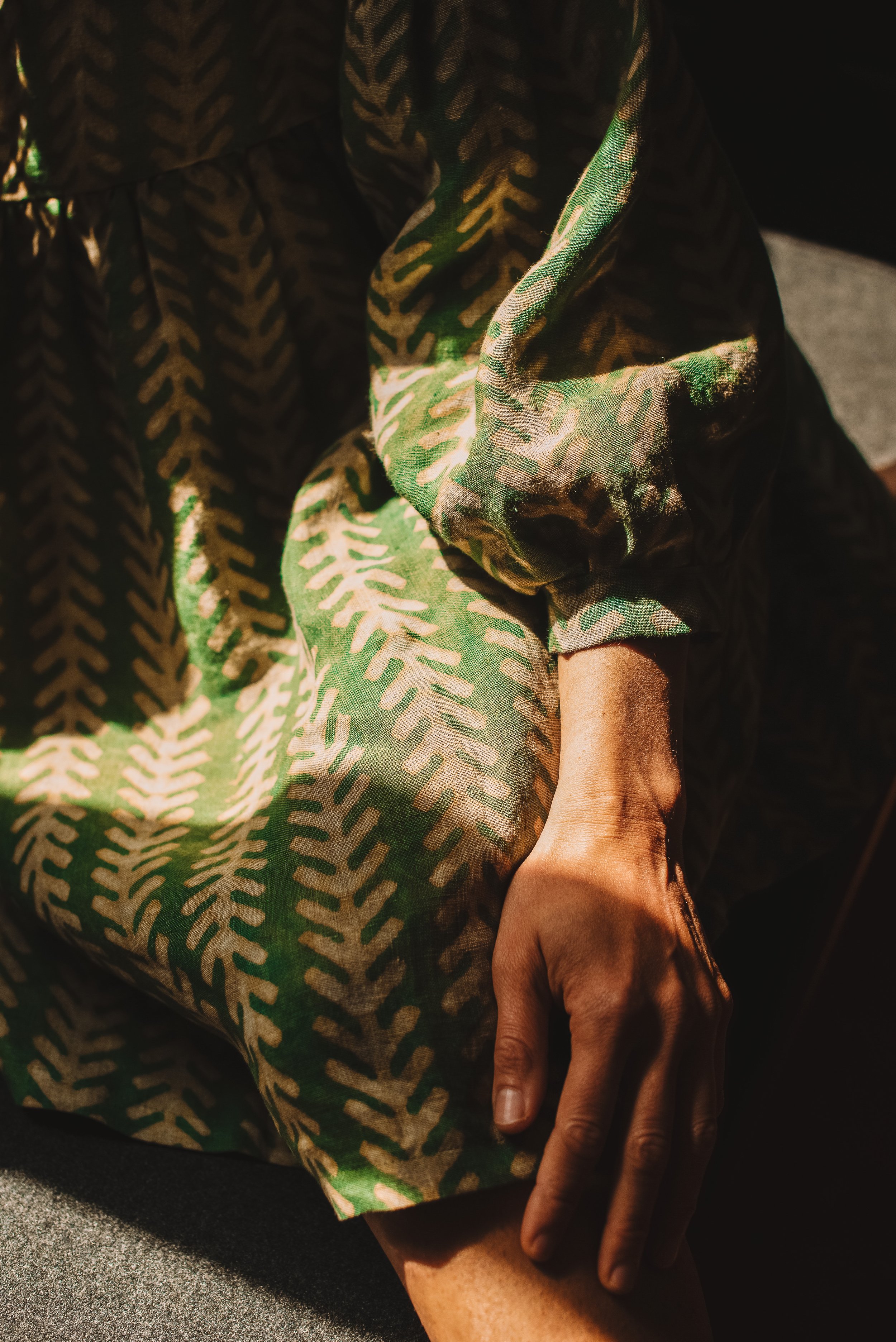Caring for natural dyes
and natural fibres
Caring for naturally dyed clothing is a little different from caring for synthetically dyed items. Each piece is hand-dyed using traditional block-printing techniques, which means your garment may carry slight traces of the printer’s table, small variations in the pattern, or subtle differences in colour.
We celebrate these marks. They reflect the hands that made them and the organic nature of the dyeing process. Each piece holds a story of earth and humanity, woven into the cloth.
NATURAL COLOUR
Natural dyes gently evolve over time, which is part of their unique beauty. The degree of colour change depends on a few key factors, including how often the garment is washed, its exposure to sunlight, and how it’s cared for.
To keep colours rich for longer:
Store garments away from direct sunlight
Wash only when necessary
Avoid contact with acidic or alkaline substances, such as deodorants, skincare products, or foods like tomatoes and lemon juice
Treat your naturally dyed clothing with care and it will continue to age beautifully, developing more character over time.
LINEN
Linen naturally softens with wear and washing. It may feel slightly stiff at first, but this is part of its natural journey.
To help soften it more quickly:
Soak in bicarbonate of soda for a few hours
Use eco-friendly fabric softener in the wash
A short tumble dry can also help relax the fibres, though it may slightly affect the colour
WASHING
When it's time to wash your garment:
Hand wash separately by colour in warm water
Dry naturally, ideally in the shade to preserve colour
Use gentle, eco-friendly detergent, soap nuts, or just water
Avoid harsh chemicals or strong detergents
Do not tumble dry cotton garments
During the first few washes, it’s normal for some colour to rinse out. This doesn’t mean your garment will lose its vibrancy. It simply means excess dye is being released from the surface fibres.

